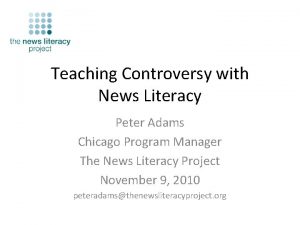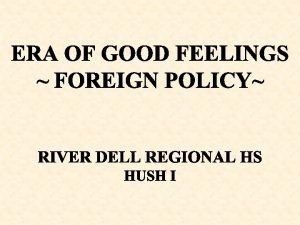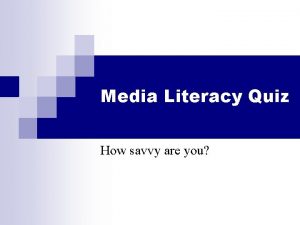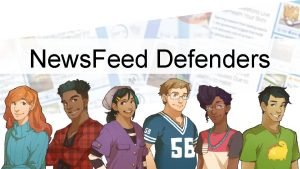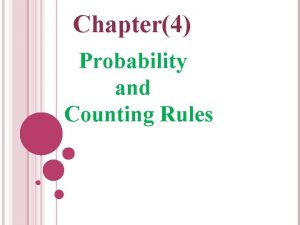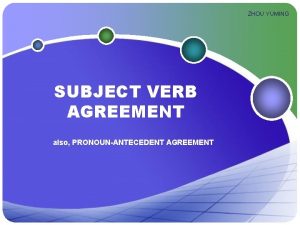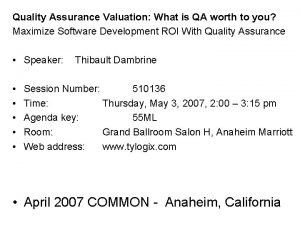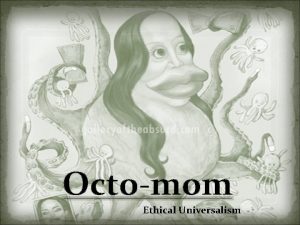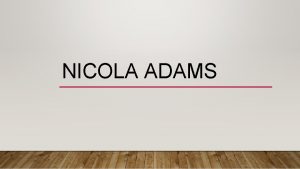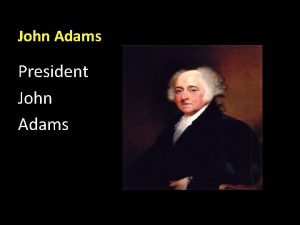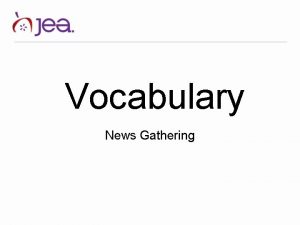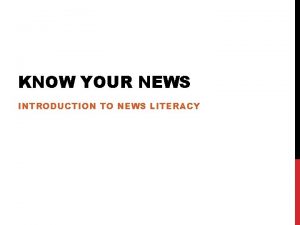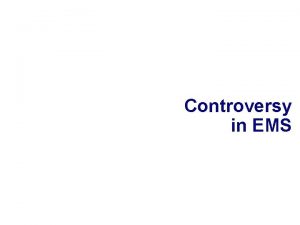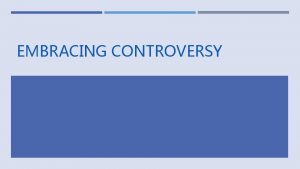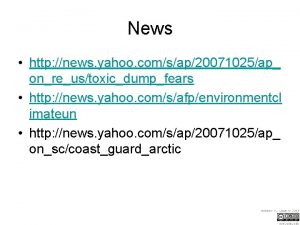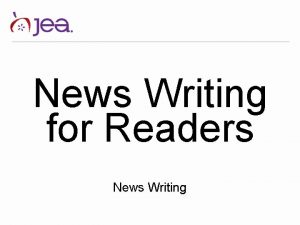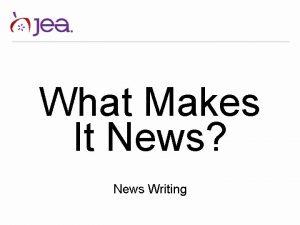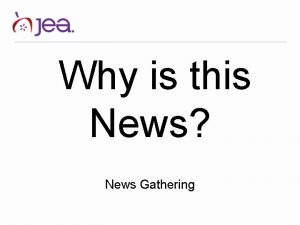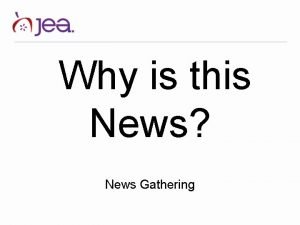Teaching Controversy with News Literacy Peter Adams Chicago
















- Slides: 16

Teaching Controversy with News Literacy Peter Adams Chicago Program Manager The News Literacy Project November 9, 2010 peteradams@thenewsliteracyproject. org

Who We Are The News Literacy Project is an innovative national program that partners with middle and high school teachers to deliver a news literacy curriculum to their students in a 2 -3 week unit. NLP connects these teachers with seasoned journalists who visit the classroom as guest instructors, and supports the production of collaborative, small group, and individual student projects.

Who We Are • 6 schools, 8 teachers, approx. 900 students • Journalists are trained in delivering news literacy lessons and avoid steering students to specific platforms or outlets • NLP embraces controversy as grist for our mill • Goal of NLP mirrors that of quality journalism itself: to give young people enough information to make up their own minds based on credible information

Who We Are • www. thenewsliteracyproject. org • http: //www. thenewsliteracyproject. org/blog/news_l iteracy_project_video_on_youtube/ • http: //www. thenewsliteracyproject. org/blog/the_ne ws_literacy_project_produces_new_video/

Why is Teaching Controversial Topics Valuable? • Critical to citizenship • Essential to teaching argumentation (huge asset in higher education) • Valuable motivator for research and inquiry • Helps students make connections between their views, their lives, the media, and public policy (interrelationship)

News Literacy is Ideal • Pursue objectivity: even though objectivity is impossible, its pursuit is a key element of quality journalism • Dispassionate and nonpartisan • Encourages self-awareness, self-examination • Based on credible/verified facts • Allows students to make up their own minds

Links to Civics and Citizenship • Well considered, thoughtful positions are essential to a strong democracy • News literate consumers act as watchdogs for misinformation and spin • Having strategies to weed out misinformation makes students more confident, assertive participants in public issues – Increasingly complex information marketplace

Activity: Confronting Bias • Select a controversial topic—one that you believe will prompt an approximately even split in the room • Individually: write position & 3 -5 support points • Pairs: interview your partner, asking them: – What is your position on this issue? – How do you support this position? – Did something in your own background or experience influence this position?

Activity: Confronting Bias • Bias is a term used to describe a tendency or preference towards a particular perspective, ideology or result, especially when the tendency interferes with the ability to be impartial, unprejudiced, or objective. The term ‘biased’ is used to describe an action, judgment, or other outcome influenced by a prejudged perspective. It is also used to refer to a person or body of people whose actions or judgments exhibit bias.

Activity: Confronting Bias • Use your interview notes to write a short (100 -150 word) report accurately describing your partner’s position. • After the reports are finished, partners should exchange reports so that they can read about themselves. • After everyone has read the report, ask the group whether or not they feel that the other person’s account is accurate, fair, or biased (& if so, in what way? ). (N. B. may be both accurate and fair. )

Activity: Confronting Bias • This activity: – Helps students take a clear position on an issue in the news – Forces students to think critically about why they hold this position—list and examine their reasons – Raises the question of bias in the news, and frames it in a productive way – Drives home the nuanced lesson that reporting a particular position can be done using objectivity as a methodology

Activity: Confronting Bias • This activity: – Can be used as a base for investigating other well-known kinds of bias, including: • • Cultural Ethnic. /racial Geographic Media (selection bias, audience bias) Gender Political/Ideological Personal Religious

Activity: Confronting Bias • Other follow-up activities or lessons might include: – Students investigating their own beliefs, starting with the one from the activity • Are my supporting points/reasons accurate and based on facts? • Do I have any biases in my position on this issue? • If you were going to write a straight, balanced news piece on this issue, what would you do to make sure that your own beliefs did not bias your writing? – This also helps students evaluate their positions on other issues, as well as analyze the positions of others, including political candidates and other public figures

Take-Aways • The concepts that lie behind the practice of quality journalism provide an excellent platform for exploring controversial subjects fairly – Emphasizes non-partisan, dispassionate consideration – Encourages an attempt to understand those with whom they disagree (balance) – Requires students to list supporting points and encourages them to base points on verified facts – Helps students understand the importance of disagreement, and see their place in public debate

Take-Aways – Introduces the difference between straight news (reading/writing for information) & opinion/ editorializing (persuasion) for state standards – Also helps students achieve critical distance in order to glimpse their own tacit assumptions and possible biases (Socratic self-questioning) – This distance, then, can be taught as an essential aspect of responsible citizenship: the ability to form thoughtful, careful, rational positions on public issues – It can also be introduced as an empowering approach to debate and self-expression

• Q & A / Discussion of activity & ideas • For more information visit www. thenewsliteracyproject. org or email: peteradams@thenewsliteracyproject. org
 Peter adams news literacy project
Peter adams news literacy project Define john quincy adams
Define john quincy adams Different people in media
Different people in media Cyber literacy and digital literacy
Cyber literacy and digital literacy Information and media literacy similarities
Information and media literacy similarities Media in mil
Media in mil 8.25.f - quiz: media literacy
8.25.f - quiz: media literacy Newsfeed defenders news literacy
Newsfeed defenders news literacy News acting
News acting A television news director wishes to use three news stories
A television news director wishes to use three news stories No news _____ good news.
No news _____ good news. Microteaching meaning
Microteaching meaning And without controversy
And without controversy Nurture nature debate
Nurture nature debate Structured academic controversy
Structured academic controversy Qa rep. khankelly theverge buck house
Qa rep. khankelly theverge buck house What is ethical universalism
What is ethical universalism
